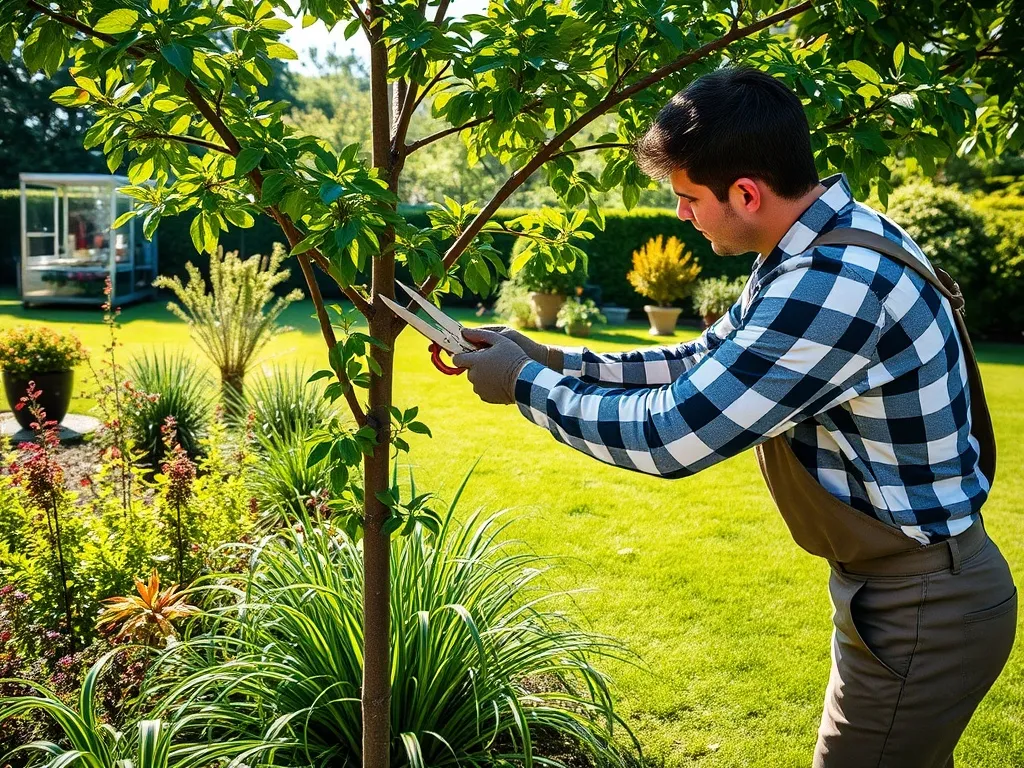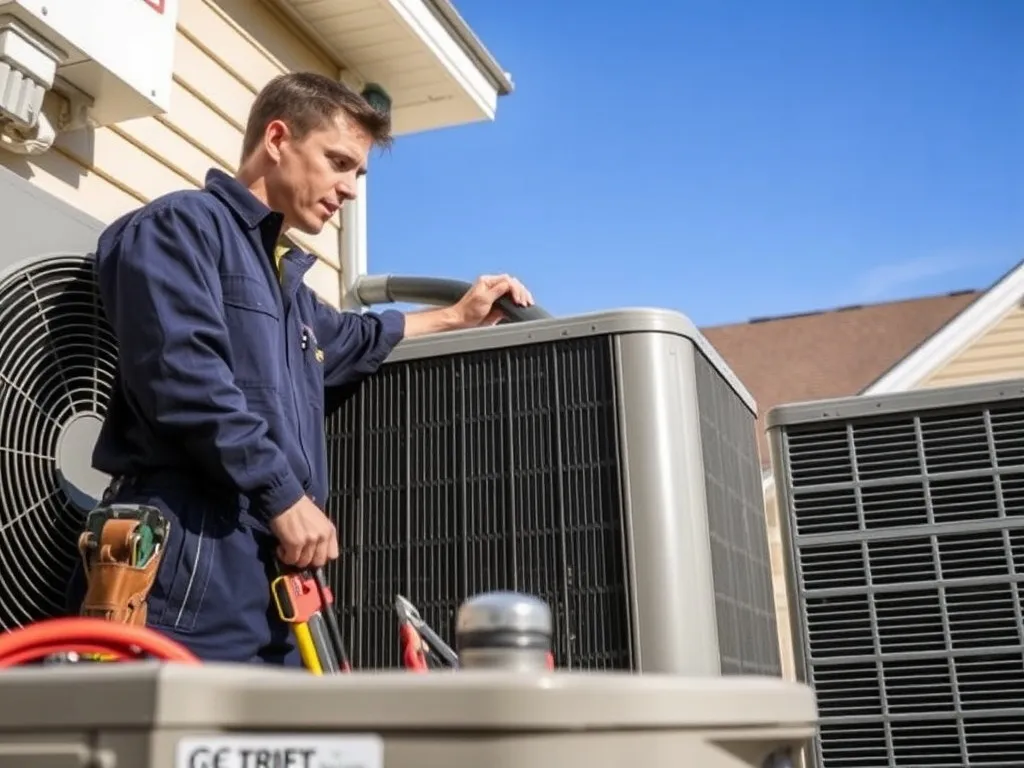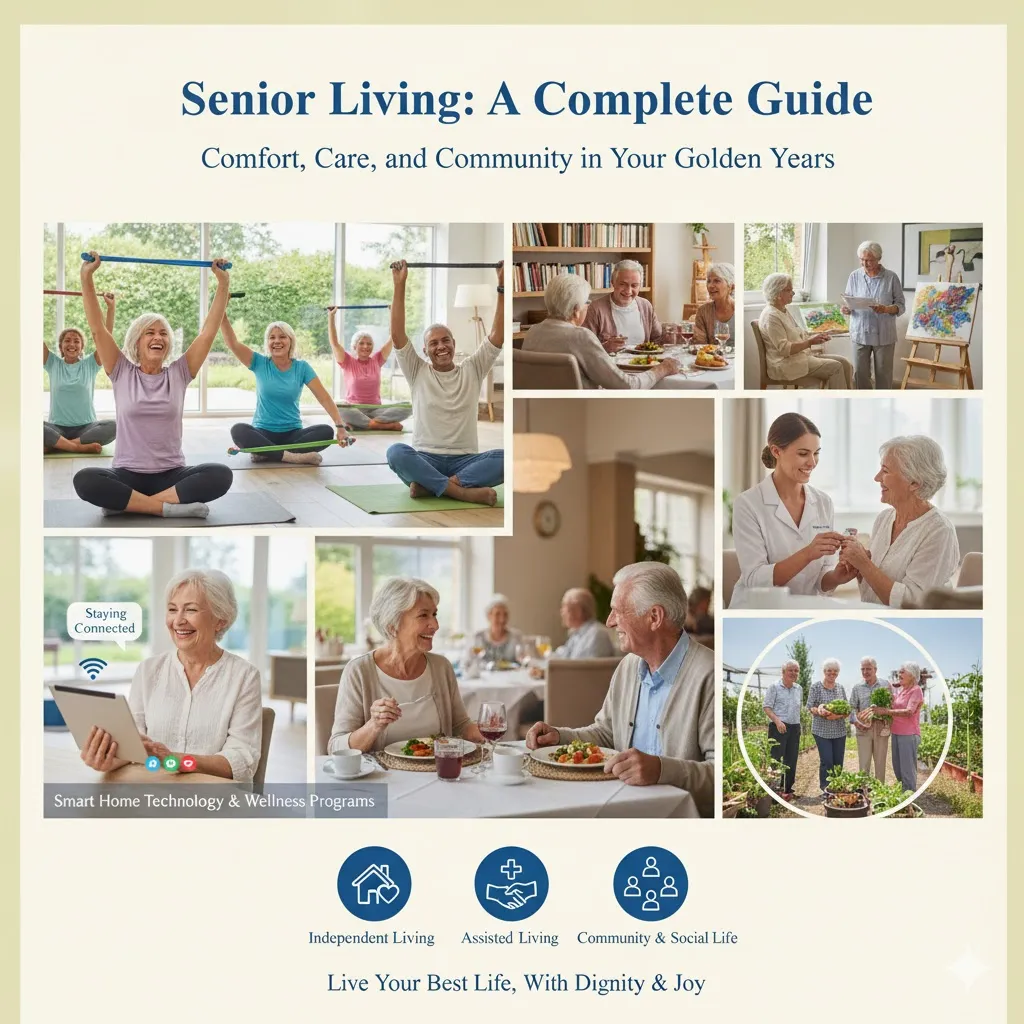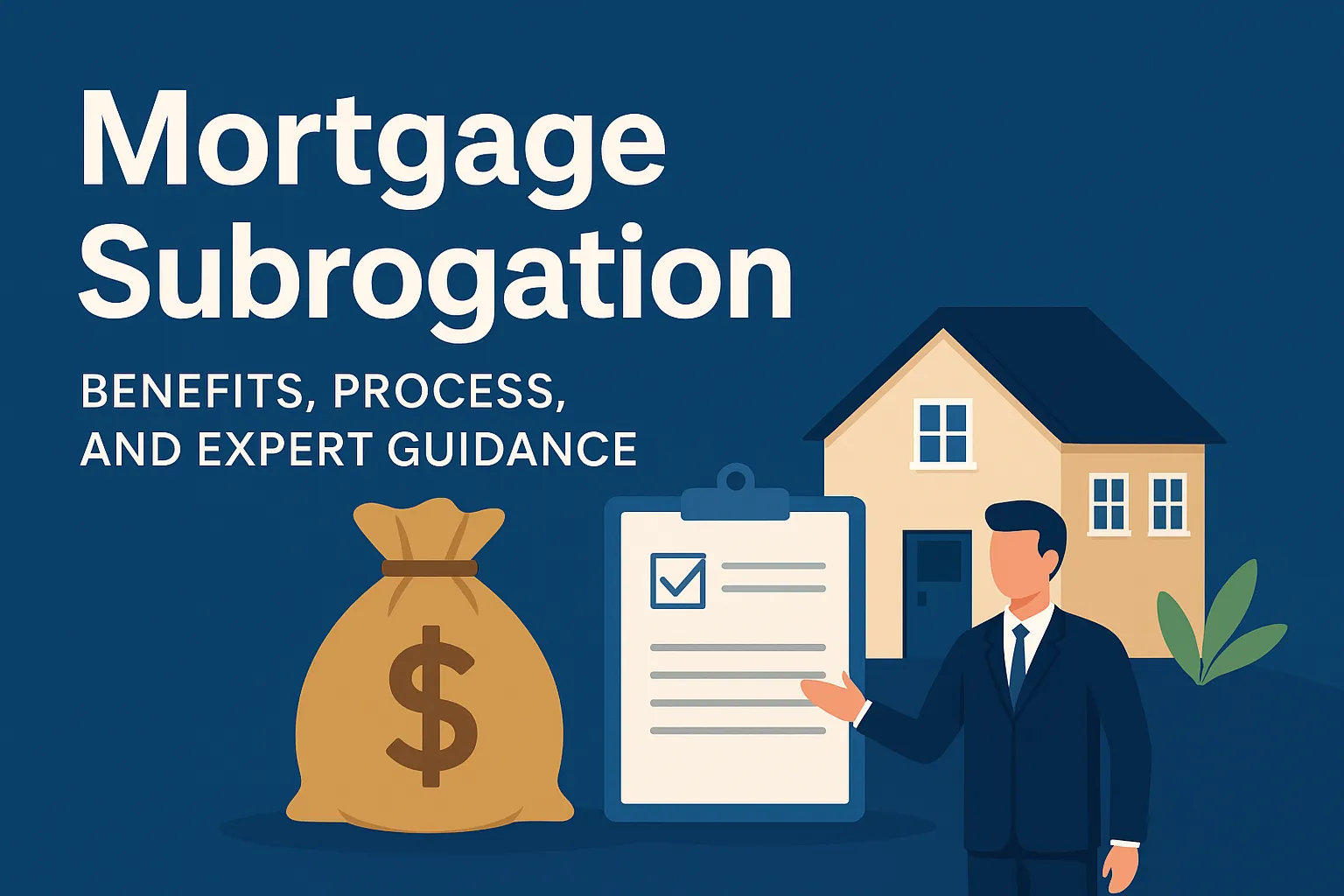Senior Living: A Complete Guide to Comfort, Care, and Community in Your Golden Years
Introduction
As people live longer and healthier lives, the concept of senior living has evolved far beyond traditional retirement homes. Today’s older adults are looking for independence, connection, and a sense of purpose in their later years. Whether you’re exploring options for yourself or a loved one, senior living offers a wide range of choices—from active communities to assisted care—designed to fit different needs and lifestyles.
This comprehensive guide explores every aspect of senior living, including what it means, the different types of communities, benefits, costs, and how to choose the right one. You’ll also learn about emerging trends shaping the future of aging with dignity and joy.
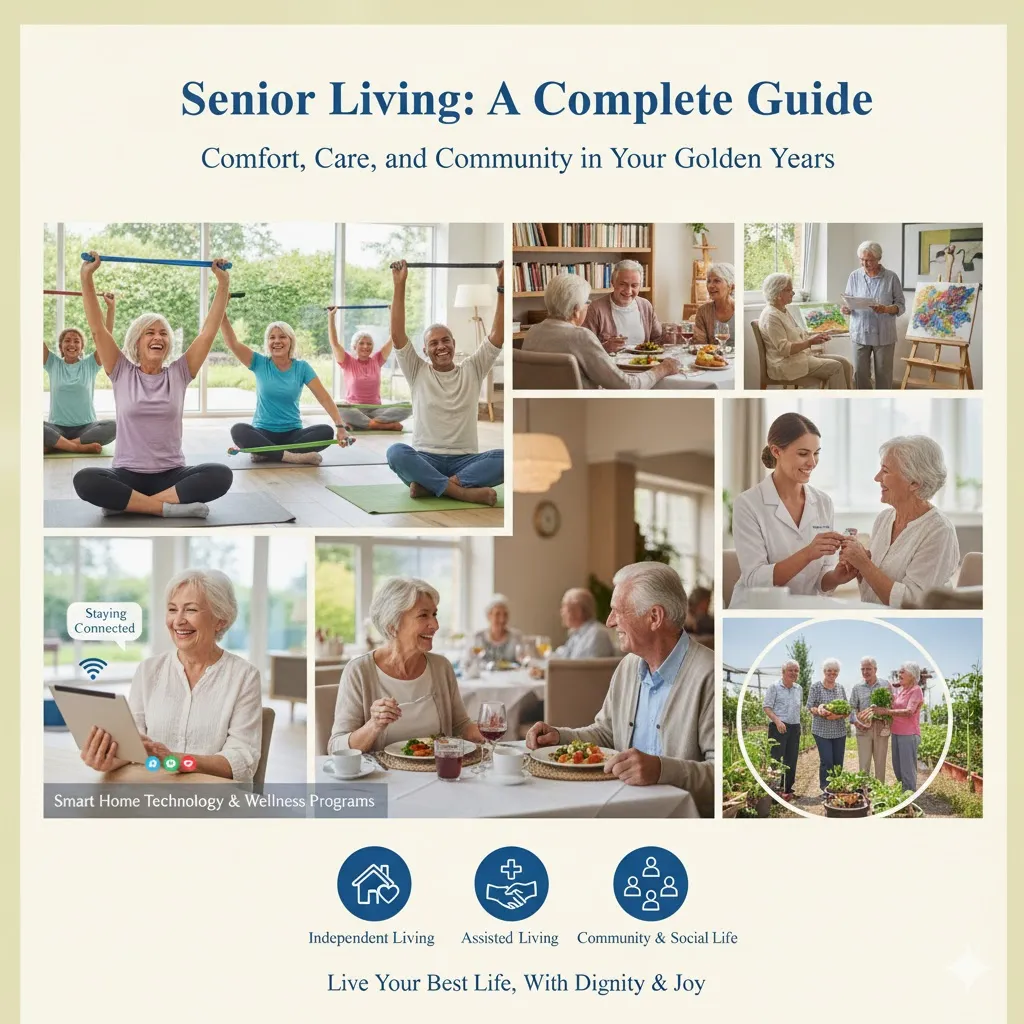
1. Understanding What Senior Living Means
At its core, senior living refers to housing and community options specifically designed for older adults, usually aged 55 and above. It provides a safe, comfortable, and socially engaging environment where seniors can maintain independence while receiving the right level of support.
1.1 The Evolution of Senior Living
The idea of senior living has changed dramatically over the decades. What once meant moving into a basic nursing facility now includes vibrant communities offering resort-style amenities, wellness programs, and a strong sense of community.
1.2 Who Is It For?
Senior living communities cater to different needs—from active retirees who want social engagement to seniors requiring daily medical assistance. Each option is tailored to promote dignity, independence, and personal fulfillment.
2. Types of Senior Living Communities
There’s no one-size-fits-all approach to senior living. Choosing the right type depends on your health, mobility, budget, and lifestyle preferences.
2.1 Independent Living
Ideal for healthy, active adults who want to downsize and enjoy a maintenance-free lifestyle. Residents can participate in fitness classes, social events, and leisure activities without worrying about chores like cooking or housekeeping.
2.2 Assisted Living
Designed for seniors who need help with daily tasks such as dressing, bathing, or medication management. Assisted senior living communities balance independence with professional support.
2.3 Memory Care
Specialized for individuals with Alzheimer’s or dementia. These communities focus on safety, structure, and cognitive therapy to enhance quality of life.
2.4 Skilled Nursing Facilities
Provide 24-hour medical care and rehabilitation for those recovering from surgery, illness, or living with chronic health issues.
2.5 Continuing Care Retirement Communities (CCRCs)
These offer multiple levels of care—independent, assisted, and skilled nursing—all within one campus, allowing residents to age in place as their needs evolve.
3. The Benefits of Senior Living
Choosing a senior living community can improve physical health, mental well-being, and overall happiness.
3.1 Social Connection and Companionship
Isolation can be a major challenge for older adults. Senior living communities offer built-in opportunities for friendship and social interaction through group activities, clubs, and dining experiences.
3.2 Health and Wellness Support
Many communities include fitness centers, wellness programs, and nutrition services. Access to regular exercise and health education can significantly improve longevity and energy levels.
3.3 Peace of Mind for Families
Loved ones can rest easy knowing their family members live in a secure, supportive environment with professional staff available around the clock.
4. Amenities That Enhance Senior Living
Modern senior living facilities go far beyond basic housing—they’re designed to create a fulfilling lifestyle.
4.1 Common Amenities
- Fitness centers and yoga studios
- Swimming pools and walking trails
- On-site salons and spas
- Gourmet dining and coffee lounges
- Libraries, art rooms, and theaters
4.2 Specialized Services
Many offer additional conveniences such as transportation, pet care, and concierge services, giving residents a true resort-like experience.
4.3 Technology Integration
Today’s senior living communities embrace technology—from emergency call systems and telehealth to Wi-Fi-enabled apartments and smart home devices.
5. The Cost of Senior Living
Understanding the financial side of senior living is essential for long-term planning.
5.1 What Influences the Price?
- Location and quality of facilities
- Type of care (independent vs. assisted)
- Size of the apartment or suite
- Included services and amenities
5.2 Average Costs in the U.S.
On average:
- Independent Living: $2,500 – $4,000/month
- Assisted Living: $4,000 – $6,000/month
- Memory Care: $5,000 – $7,000/month
- Nursing Homes: $7,000+/month
5.3 Ways to Finance Senior Living
- Personal savings or retirement funds
- Long-term care insurance
- Veterans benefits
- Government programs like Medicaid
6. How to Choose the Right Senior Living Community
Selecting the perfect senior living option takes research, planning, and a clear understanding of personal needs.
6.1 Steps to Follow
- Assess health and mobility needs.
- Set a realistic budget.
- Visit several communities.
- Talk to residents and staff.
- Review contracts and policies carefully.
6.2 Questions to Ask
- What types of care and services are available?
- How does the community handle medical emergencies?
- What is included in the monthly fee?
- Are pets allowed?
6.3 Family Involvement
Families play a vital role in supporting seniors during the transition, providing emotional encouragement and helping evaluate options.
7. Lifestyle in Senior Living Communities
Life in senior living is more vibrant and engaging than ever before.
7.1 Daily Activities and Events
Residents can enjoy group exercise classes, art workshops, movie nights, and community outings. These activities encourage movement, creativity, and connection.
7.2 Nutrition and Dining
Many communities feature restaurant-style dining with diverse, healthy menu options. Dietitians often design meals to meet specific health needs.
7.3 Spiritual and Emotional Wellness
Senior living communities often offer chaplain services, meditation sessions, and mental health support, fostering inner peace and resilience.
8. Health and Safety in Senior Living
Health and safety are top priorities in any senior living environment.
8.1 On-Site Medical Care
Many facilities partner with healthcare providers for regular checkups, physical therapy, and emergency response services.
8.2 Preventive Health Programs
Programs focus on fall prevention, fitness, and chronic disease management to keep residents healthy and active.
8.3 Safety Features
- Emergency call systems
- Non-slip flooring
- 24-hour staff availability
- Secure entry systems
These features ensure peace of mind for both residents and their families.
9. The Emotional Transition to Senior Living
Adjusting to life in a senior living community can take time, but it’s also an opportunity for growth and renewal.
9.1 Overcoming Fear and Anxiety
It’s normal to feel nervous about leaving a longtime home. Support groups and family visits can help ease the transition.
9.2 Building New Relationships
Many residents discover new friendships and even romantic connections. Shared experiences and community events make it easy to connect.
9.3 Personalizing the New Space
Decorating with personal items, photos, and familiar furniture can make a new apartment feel like home right away.
10. The Future of Senior Living
The landscape of senior living is rapidly evolving to meet the needs of future generations.
10.1 Technological Advancements
Expect more smart senior living solutions such as AI health monitoring, virtual reality therapy, and digital social platforms that keep seniors engaged and connected.
10.2 Sustainable Design
Communities are incorporating green spaces, solar power, and eco-friendly materials to promote environmental responsibility.
10.3 Holistic Wellness Approach
The future of senior living emphasizes mind-body balance—combining nutrition, fitness, meditation, and lifelong learning opportunities.
Conclusion
Senior living today represents freedom, safety, and the chance to live life to the fullest. It’s no longer just about care—it’s about community, connection, and comfort. Whether you’re looking for an active lifestyle, daily assistance, or peace of mind for your family, there’s a senior living community perfectly suited to your needs.
By understanding the options, benefits, and future trends, you can make a confident choice that supports independence, happiness, and dignity for years to come. The journey toward your ideal senior lifestyle starts with one step—finding the place where you truly belong.

